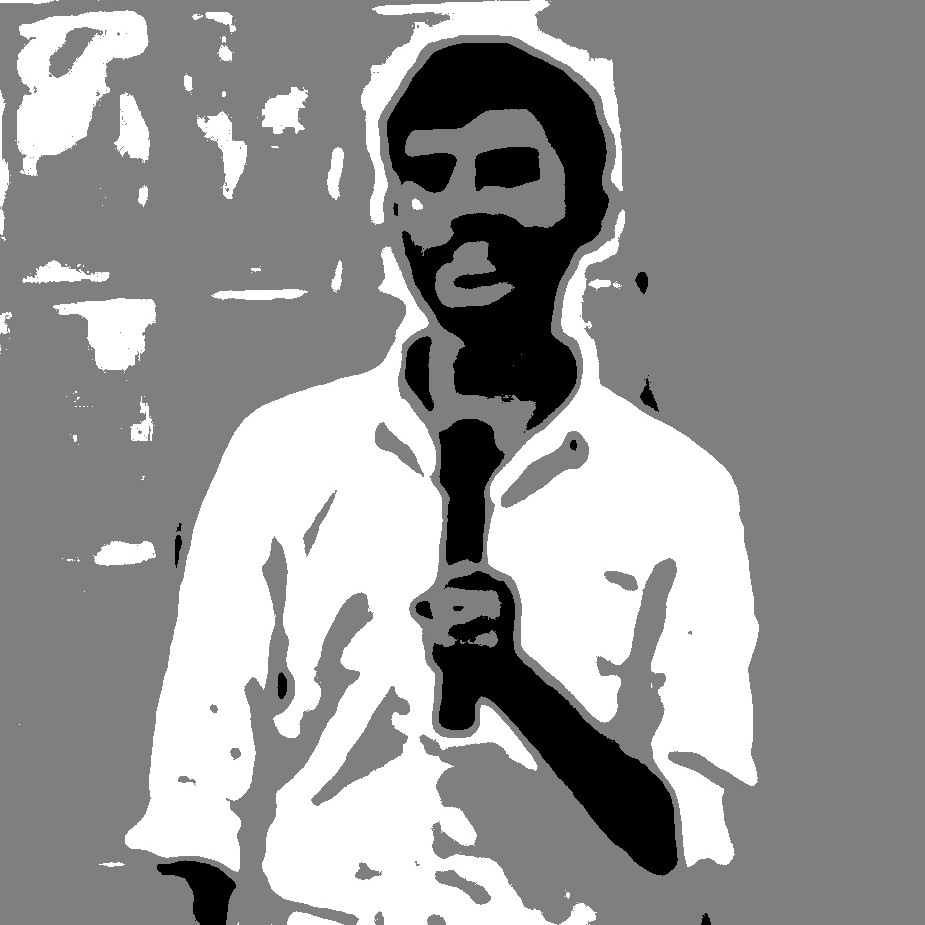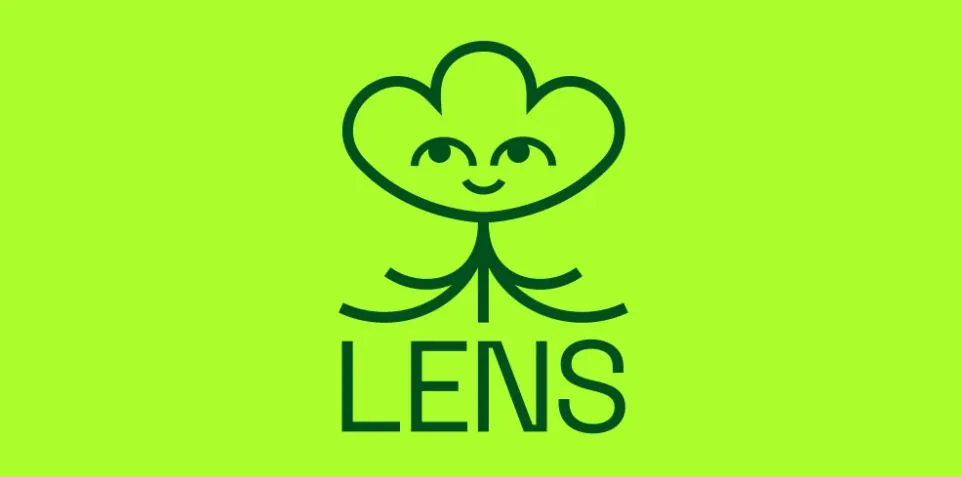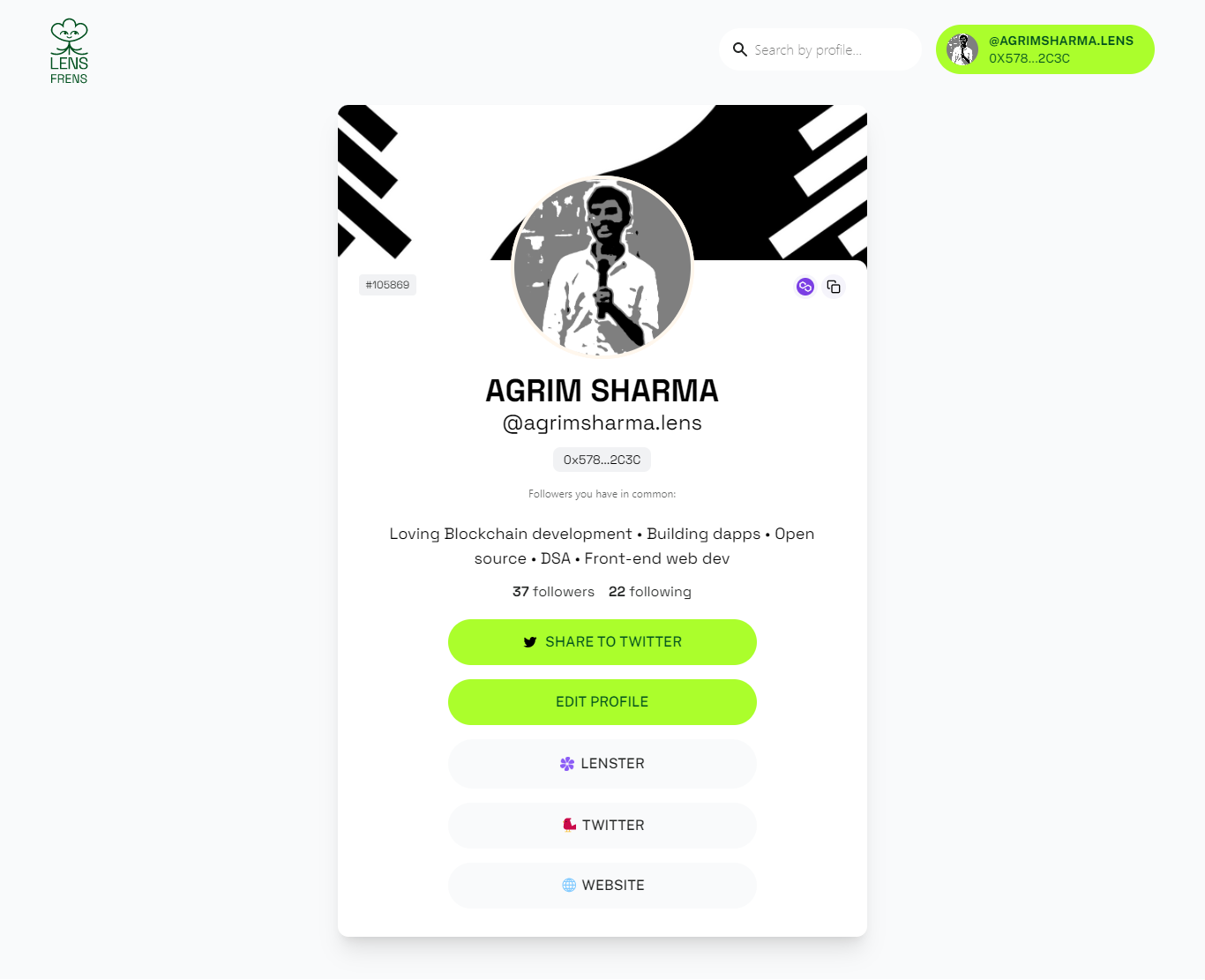The Ultimate Guide to Lens Protocol for Beginners
 Agrim Sharma
Agrim Sharma
Social media is an important part of our lives. With advancements in web3, how can this domain of the internet remain untouched? How will social media revolutionize in the Web3 era?
Lens Protocol is exactly for the purpose(And... much more🤫).
Let's start with the basic question,
What is Lens?
Lens Protocol is the blockchain-based open-source social graph created to reshape social media for the modern world of web 3.0 and decentralization.
It is based on a Polygon chain (Layer2 chain) and any application can connect to this decentralized social graph. It contains all features needed to serve the web3 community and most important, is built on the polygon chain which is Earth-friendly. Each publication on Lens has a low carbon footprint alongside being a secure and low-cost blockchain.
But there might be a question in your mind, what is a social graph... Right?
What is a social graph?
To understand Lens, we have to know what this is.
Do you know about Graph- data structure? Yes, this is exactly that. The social graph represents social relations between entities.
There are 4 fundamental components of a social graph.
Nodes represent actors in the network (people)
data represent the content shared between the nodes (posts or tweets)
edges represent a relationship between the nodes (Facebook friends or Twitter followers)
jumping functions represent how data is transmitted from one subgroup to another over a platform (like, comment or retweet)
Social graph globally maps everybody on the social network and how they are related.
Let's see an example, using Facebook's social graph, TripAdvisor allows users to consult their Facebook friends for travel planning tips.
In web2, all these social graphs are owned by big companies like Google, and Facebook but when we bring web3 into the picture, the users own their content, social graph, and own their data.
Now, you know what is a social graph!😀
Some features of LENS
Decentralized
Web2 social networks currently read every piece of information from centralized databases. Content and profile information belonging to users are locked to a particular network and are the property of the network operator. The advantage of Lens protocol is that it is a decentralized platform that grants the user full access rather than limiting access to any particular service owner.
Composable
Building a social media platform from scratch can be exhausting. A data structure, such as a graph, is needed to build a social graph and track the relationships (edges) between your contacts (nodes).
Using a centralized service, such as Facebook, is one option, but it has drawbacks, such as giving control to the service provider and limiting data access to other applications. The service stops working if the server crashes.
Lens, on the other hand, is the last social media handle you will make. Here, you own your profile, you have the power over your content and that's how your digital profile should identify: yours!
Permissionless
The Lens is a permission-free, non-custodial media profile that ensures ownership through modularity at its base. The next generation of the internet will put consumers in charge of their data and get rid of the requirement for intermediaries like social media sites or their authorization to launch or interact. It gives creators and communities the freedom to independently develop social media platforms, profiles, and content.
An example-
Who is unaware that Donald Trump's (@realDonaldTrump) Twitter account has been permanently suspended? No one would want to lose a social media account with such a large following. Due to the lens protocol's composability and decentralized characteristics, even if you lose access to one of these accounts, you won't have to start over because you can simply migrate your material and profile to another social network account. For all social media accounts, use one platform.
Some insights in Lens
Profile
Now that you have learned about all the features of Lens, you must have curiosity about what a profile in lens looks like.
Here's my lens Profile (Connect with me here):

But does this profile ensures all the features written above? And how do you get control of your content on Lens?
It's through your own profile NFT!!
Every address on Lens owns a profile NFT which is what makes you eligible to be on the platform, one address can have multiple NFTs.
This NFT can post publications to it. What the heck is a publication? Let's find out.
Publications
All the content made by users and creators is known as publications. You can think of publications in three types:
Posts
Comments
Mirrors
Out of these, posts are the base object; comments & mirrors are additional functionalities. We will see more about mirrors later on.
All the posts belong to the respective ProfileNFTs of their users and creators which ensures that the content is user-owned.
Comment
These comments are just like on any other social media platform. Comments allow additional functionality of adding special comments or notes to the user's content on other publications. Comments also belong to ProfileNFTs and the ownership completely belongs to the owner.
Mirrors
You might be aware of retweet feature on Twitter, this is what, mirror is for Lens.
Mirrors sometimes refer to other publications, hence they are subject to conditions of the original publication's reference module. If there is a condition restricting access to mirror the post if the reposter does not follow the original content owner and the reposter does not have a follow NFT, the transaction to mirror fails. Fun fact: Mirrors have their own reference modules which define who can mirror or comment on their mirrors.
Collect
A collect allows a user to generate revenue from their posts.
Isn't it cool?😀
When a user creates their own content via Lens protocol, they can allow their followers to purchase their content. For doing this, they can set up a Collect module to allow other users to mint their NFTs to the publication's contentURI. A content creator can set the limit of the number of collects, limit the time or any other functionality just by modifying their Collect modules.
Follow
Now let's tell you an interesting fact,
When you follow someone on Lens Protocol, it gives you a special follow NFT. This NFT has an additional value created by the creator or the community. The ID of each newly issued Follow NFT for given profile increments by 1, such that the first follower's NFT has an ID of 1; the tenth has an ID of 10, and so on.
A specific Follow Module, which contains all of the logic used to decide whether a user requesting to follow the profile should be issued a Follow NFT, can be attached to each Profile NFT.
For instance, a profile might include a follow module that charges 5 MATIC for a Follow NFT, which is similar to a super follow on Twitter.
Conclusion
Web3 provides an improvement, and projects like Lens Protocol are promoting this transformation. Users can take advantage of blockchain technology's potential to enhance their social media experience and even personalize their platform. Whatever the project, the advantages of web3 for social media are clear and have the potential to have a big influence, whether it's Lens Protocol or another one.
If you want a profile on Lens, you can head on to their site- here! Also, to get eligible for a Lens handle, your wallet address has to be whitelisted, keep an eye on Twitter for those giveaways.
Follow me on Lens if you have one- here!
Sources: My learnings and ORB.
Thanks for Reading!😄
Keep Learning!
Keep Hustling!🫡
Subscribe to my newsletter
Read articles from Agrim Sharma directly inside your inbox. Subscribe to the newsletter, and don't miss out.
Written by

Agrim Sharma
Agrim Sharma
I am a developer who is obsessed with tech :)